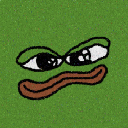-
 Bitcoin
Bitcoin $118,698.3676
0.16% -
 Ethereum
Ethereum $3,428.4877
5.97% -
 XRP
XRP $3.2496
9.52% -
 Tether USDt
Tether USDt $1.0002
0.00% -
 BNB
BNB $725.6930
4.36% -
 Solana
Solana $174.8923
4.52% -
 USDC
USDC $0.9997
-0.02% -
 Dogecoin
Dogecoin $0.2139
6.02% -
 TRON
TRON $0.3155
4.62% -
 Cardano
Cardano $0.8045
7.12% -
 Hyperliquid
Hyperliquid $46.6582
-1.72% -
 Stellar
Stellar $0.4676
0.80% -
 Sui
Sui $4.0143
0.38% -
 Chainlink
Chainlink $17.1546
2.97% -
 Hedera
Hedera $0.2458
3.27% -
 Bitcoin Cash
Bitcoin Cash $496.5967
-0.06% -
 Avalanche
Avalanche $22.8813
3.13% -
 Shiba Inu
Shiba Inu $0.0...01439
3.42% -
 UNUS SED LEO
UNUS SED LEO $8.8389
0.42% -
 Toncoin
Toncoin $3.2113
2.82% -
 Litecoin
Litecoin $101.2646
4.24% -
 Polkadot
Polkadot $4.2262
2.32% -
 Monero
Monero $340.4295
2.92% -
 Pepe
Pepe $0.0...01365
2.92% -
 Uniswap
Uniswap $8.9702
-2.78% -
 Bitget Token
Bitget Token $4.7675
2.00% -
 Dai
Dai $0.9998
-0.02% -
 Ethena USDe
Ethena USDe $1.0003
-0.04% -
 Aave
Aave $324.6394
-2.11% -
 Bittensor
Bittensor $433.6051
-0.88%
How to use EMA for crypto trading?
The Exponential Moving Average (EMA) helps crypto traders identify trends, reversals, and entry/exit points by prioritizing recent price data.
Jul 12, 2025 at 06:14 am

Understanding EMA and Its Role in Crypto Trading
The Exponential Moving Average (EMA) is a technical indicator used to analyze price trends by giving more weight to recent prices. Unlike the Simple Moving Average (SMA), which assigns equal weight to all data points, EMA reacts more significantly to recent price changes, making it particularly useful in fast-moving markets like cryptocurrency.
In crypto trading, EMA helps traders identify potential trend reversals, support and resistance levels, and entry or exit points. Because of its sensitivity to new information, EMA is often preferred over SMA by active traders who need quick insights into market dynamics.
Selecting the Right EMA Period for Cryptocurrency Markets
Choosing the right time frame is crucial when applying EMA in crypto trading due to the high volatility of digital assets. Commonly used EMAs include:
- 9-day EMA: Often used for short-term trading signals
- 20-day EMA: Offers a balance between responsiveness and smoothing
- 50-day EMA: Used for medium-term trend analysis
- 200-day EMA: Considered a long-term indicator of market direction
For cryptocurrencies like Bitcoin and Ethereum, shorter time frames are frequently used because of their rapid price swings. Traders often combine multiple EMAs—like the 9 and 21 EMA crossover strategy—to generate buy or sell signals more effectively.
Setting Up EMA on Trading Platforms
To use EMA for crypto trading, you must first set it up on your preferred charting platform. Most platforms, such as TradingView, Binance, and Bybit, offer built-in EMA tools. Here’s how to do it step-by-step:
- Open your chosen trading platform and navigate to the chart section
- Locate the indicators or studies menu
- Search for “Exponential Moving Average” or EMA
- Select the desired period (e.g., 9, 20, 50)
- Apply the indicator to the chart
- Adjust color and thickness for better visibility if needed
Once applied, EMA will appear as a line overlaying the price chart, helping you visualize trends and potential reversal zones.
Interpreting EMA Crossovers for Entry and Exit Signals
One of the most popular strategies involving EMA is the crossover method, where two different EMAs are plotted together to spot trading opportunities:
- When a shorter-period EMA crosses above a longer-period EMA, it generates a buy signal
- Conversely, when a shorter-period EMA crosses below a longer-period EMA, it indicates a sell signal
For example:
- A golden cross occurs when the 9 EMA crosses above the 21 EMA, suggesting bullish momentum
- A death cross happens when the 9 EMA drops below the 21 EMA, signaling bearish sentiment
These crossovers should be confirmed with volume spikes or other indicators like RSI or MACD to avoid false signals, especially in highly volatile crypto markets.
Using EMA as Dynamic Support and Resistance Levels
Another effective way to apply EMA in crypto trading is using it as a dynamic support or resistance level. In trending markets:
- During an uptrend, the price often pulls back to the EMA line before bouncing higher, offering buying opportunities
- In a downtrend, the price may rally toward the EMA line before resuming the downward move, presenting selling chances
Traders commonly use the 20 EMA or 50 EMA as reference lines for these scenarios. It's important to note that EMA works best in strong trending environments and can produce misleading signals during sideways or choppy market conditions.
Combining EMA with Other Indicators for Better Accuracy
Relying solely on EMA may lead to false signals, especially in crypto markets where sudden news or whale movements can distort price action. To improve accuracy:
- Combine EMA with volume indicators to confirm trend strength
- Use RSI (Relative Strength Index) to detect overbought or oversold conditions around EMA levels
- Add MACD (Moving Average Convergence Divergence) to validate crossovers
This multi-indicator approach allows traders to filter out noise and focus on high-probability setups. For instance, a bullish EMA crossover accompanied by rising volume and RSI crossing above 50 could indicate a strong buy opportunity.
Frequently Asked Questions
Q: Can EMA be used for all types of cryptocurrencies?
Yes, EMA is applicable across various cryptocurrencies, including Bitcoin, Ethereum, altcoins, and stablecoins. However, its effectiveness may vary depending on the asset’s liquidity and volatility.
Q: Is EMA better than SMA for crypto trading?
EMA gives more weight to recent prices, making it more responsive to current market conditions compared to SMA. This makes EMA generally more suitable for fast-moving crypto markets.
Q: How many EMAs should I use on a single chart?
While there's no fixed number, using 2–3 EMAs is common practice. Too many EMAs can clutter the chart and make interpretation difficult. Popular combinations include 9 & 21 EMA or 50 & 200 EMA.
Q: What timeframes work best with EMA in crypto trading?
Shorter timeframes like 1-hour or 4-hour charts are preferred for intraday trading, while daily charts are better suited for swing trading. The choice depends on your trading style and strategy.
Disclaimer:info@kdj.com
The information provided is not trading advice. kdj.com does not assume any responsibility for any investments made based on the information provided in this article. Cryptocurrencies are highly volatile and it is highly recommended that you invest with caution after thorough research!
If you believe that the content used on this website infringes your copyright, please contact us immediately (info@kdj.com) and we will delete it promptly.
- Winning Design: Nine-Year-Old's Art Becomes a Chocolate Coin!
- 2025-07-18 01:10:12
- Bitcoin, Market Cap & Strategy: Decoding the Crypto Game in 2025
- 2025-07-18 01:10:12
- Plume and Colb Finance: Tokenizing Pre-IPO Equities for the Blockchain Era
- 2025-07-18 00:35:12
- Bitcoin's Bull Run: Can It Break Through the Bearish Sentiment?
- 2025-07-18 00:35:12
- Silver Breaks 14-Year High: What's Driving the Rally?
- 2025-07-17 22:50:13
- Ozak AI, Stellar (XLM), and Solana (SOL): The New Crypto Watchlist Stars
- 2025-07-17 23:50:12
Related knowledge

Advanced RSI strategies for crypto
Jul 13,2025 at 11:01am
Understanding the Basics of RSI in Cryptocurrency TradingThe Relative Strength Index (RSI) is a momentum oscillator used to measure the speed and chan...

Crypto RSI for day trading
Jul 12,2025 at 11:14am
Understanding RSI in the Context of Cryptocurrency TradingThe Relative Strength Index (RSI) is a momentum oscillator used to measure the speed and cha...

Crypto RSI for scalping
Jul 12,2025 at 11:00pm
Understanding RSI in the Context of Crypto TradingThe Relative Strength Index (RSI) is a momentum oscillator widely used by traders to measure the spe...

What does an RSI of 30 mean in crypto
Jul 15,2025 at 07:07pm
Understanding RSI in Cryptocurrency TradingRelative Strength Index (RSI) is a momentum oscillator widely used in cryptocurrency trading to measure the...

What does an RSI of 70 mean in crypto
Jul 13,2025 at 06:07pm
Understanding the RSI Indicator in Cryptocurrency TradingThe Relative Strength Index (RSI) is a widely used technical analysis tool that helps traders...

Does RSI work in a bear market for crypto
Jul 16,2025 at 01:36pm
Understanding RSI in Cryptocurrency TradingThe Relative Strength Index (RSI) is a momentum oscillator used by traders to measure the speed and change ...

Advanced RSI strategies for crypto
Jul 13,2025 at 11:01am
Understanding the Basics of RSI in Cryptocurrency TradingThe Relative Strength Index (RSI) is a momentum oscillator used to measure the speed and chan...

Crypto RSI for day trading
Jul 12,2025 at 11:14am
Understanding RSI in the Context of Cryptocurrency TradingThe Relative Strength Index (RSI) is a momentum oscillator used to measure the speed and cha...

Crypto RSI for scalping
Jul 12,2025 at 11:00pm
Understanding RSI in the Context of Crypto TradingThe Relative Strength Index (RSI) is a momentum oscillator widely used by traders to measure the spe...

What does an RSI of 30 mean in crypto
Jul 15,2025 at 07:07pm
Understanding RSI in Cryptocurrency TradingRelative Strength Index (RSI) is a momentum oscillator widely used in cryptocurrency trading to measure the...

What does an RSI of 70 mean in crypto
Jul 13,2025 at 06:07pm
Understanding the RSI Indicator in Cryptocurrency TradingThe Relative Strength Index (RSI) is a widely used technical analysis tool that helps traders...

Does RSI work in a bear market for crypto
Jul 16,2025 at 01:36pm
Understanding RSI in Cryptocurrency TradingThe Relative Strength Index (RSI) is a momentum oscillator used by traders to measure the speed and change ...
See all articles

























































































